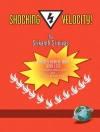New technologies and ongoing developments in the fields of Virtual reality, augmented reality and artificial intelligence are changing the ways in which we facilitate learning. Recognising the positive role these technologies can play in the learning and progress of students assessed as having special educational needs, this practical guide explains the characteristics, benefits, risks and potential applications of new technologies in the classroom.An innovative and timely resource, Virtual Reality, Augmented Reality and Artificial Intelligence in Special Education offers a background in the evidence-based theory and practice of using new technologies in an educational context. Accessible and free of complex jargon, chapters provide information on the development, intended uses and most current terminology used in relation to technologies, and explains how modern equipment, approaches and possibilities can be used to promote improved communication skills, independent learning and heightened self-esteem amongst students diagnosed with SEND. Offering a wealth of practical tips, downloadable resources and ideas for engaging with technology in the classroom, the text will support teachers to ensure that students can benefit from exciting technological advances and learn to use them appropriately. Demystifying a complex and varied field, this practical resource will inspire and inform teachers, SENCOs and practitioners working with children and students with SEND as they harness the use of technology in the classroom.
Ange Anderson
Virtual Reality, Augmented Reality and Artificial Intelligence in Special Education [PDF ebook]
A Practical Guide to Supporting Students with Learning Differences
Virtual Reality, Augmented Reality and Artificial Intelligence in Special Education [PDF ebook]
A Practical Guide to Supporting Students with Learning Differences
购买此电子书可免费获赠一本!
语言 英语 ● 格式 PDF ● 网页 124 ● ISBN 9780429679742 ● 出版者 Taylor and Francis ● 发布时间 2019 ● 下载 3 时 ● 货币 EUR ● ID 6935231 ● 复制保护 Adobe DRM
需要具备DRM功能的电子书阅读器












